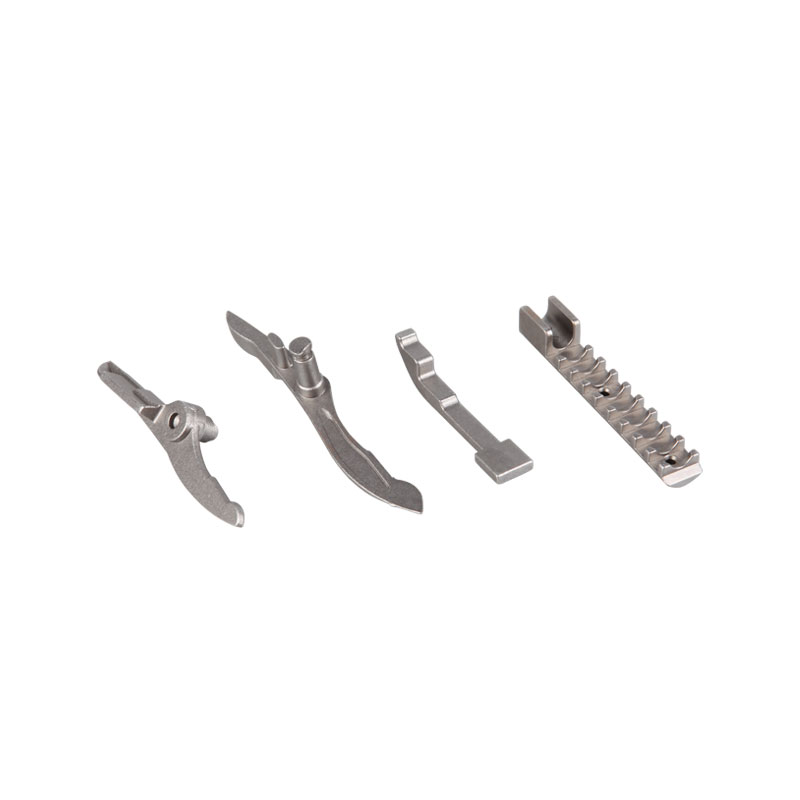During the process of metal working, jewelry making, an […]
During the process of metal working, jewelry making, and many other products, liquid metal is delivered into a hollow channel called a mold, called a sprue. The negative impression of the desired shape of the finished product is created and the sprue is cooled and the part is extracted. A second process is used to reshape the part once the metal and mold have cooled. This method is often used in the manufacturing of earrings, necklaces, bracelets, and other types of jewelry. Here information comes from China Metal Casting Factory, support by tosing-casting.com .
Metal Casting
The metal casting industry is one of the world's largest recyclers, preventing up to 15 million tons of scrap metal from entering landfills or junkyards. A simple example is the table below, which shows how much casting was imported into the United States in 2009. Those who are looking for ways to become more productive can learn more about the process from articles about the industry's history. You can start by learning the basics and applying them in your own metalworking business.
The first casting made in the U.S. soil was the Saugus Pot, made in 1646 near Lynn, MA. By 2017, 10.7 million tons of castings were produced in the U.S., and the value of these castings is projected to reach $44.3 billion by 2019. This process is effective at creating complex and simple designs. Once a solid material is melted, it is added to a mold and heated to a proper temperature. The end product can be in any form the designer desires.
Using a metal mold, you can create your own metal-casting project in your own home. The process of metal casting is simple, but requires a lot of preparation and attention to detail. Once the mold is ready, the metal is liquefied and poured into it. The new part should then be cooled down. There are several steps in the process. When you are finished, you can inspect the part and remove it from the mold.
The process of metal casting involves several steps. The main components of the process include metal die, molds, and wax. Once the wax is melted, the metal die must be cut. Afterwards, the core is removed from the final cast, leaving a hole in the final product. The process of metalcasting is crucial in national defense, economy, and the production of highly engineered products. The industry creates nearly 490,000 jobs in the U.S.
There are many ways to make metal castings. The process is a very simple process, but there are some things that you need to keep in mind. The first step is to find a suitable mold. If you want to make a metal part, you must know the size of the mold. You should be aware of the dimensions of the parts. If the part is too small, you will have to buy a new mould. This is the most crucial step in the process.

The second step of the process is to cut the molten metal into manageable lengths. During this process, the molten metal is pushed out of the casting mold through gas jets. The resulting shape will have no defects and will be defect-free. It will be free from any gaps. If you need a larger mold, you can stack it in three parts. You can also stack the dies up.
The second step in the process is to remove the part from the mold. This is done by pulling the part out of the mold and then removing it from the mold. This process is usually labor-intensive and can have limited dimensional accuracy. A large portion of the work is done in the final part. The parts will need post-processing steps. These steps are vital to the process. If you've mastered this step, metal casting can make your metal project look great.
The process of metal casting involves melting metals to molten state before pouring into the mold. During the process, engineers create a pattern and choose the process that produces the desired surface finish and size. For low-volume production, it is less efficient, but it can save time and money compared to other methods. Once a pattern has been designed, it can be made into a model, prototype, or product. There are several advantages and disadvantages to metal casting.
Once the mold has been poured, the molten metal is poured into the mold. After the molten metal has solidified, it is removed from the mold. During this process, robots are used to move the molten metal in a precise way. A video borescope is a vital tool in the inspection of metal casting. It will detect imperfections or residue that may occur in the final product. A well-designed model will last for a lifetime.
Castings are often used in different industries. These parts can be used for a wide variety of purposes. Some examples include turbine blades, power tool housings, and automotive engine blocks. Various companies produce products using castings. The American Foundry Society hosts an annual Government Affairs Fly-in and promotes its education and awareness programs. There are many other organizations and individuals that are dedicated to the advancement of metalcasting. They work with the National Association of Manufacturers to provide the public with information about the industry.
While casting metal, it is important to ensure optimal conditions are created. A perfect mold is a smooth, even, and consistent surface. A well-done casting is free of defects. The metal must solidify within the mold, which prevents it from deforming. The correct conditions must be created for the metal to solidify without bubbles. The process is important and it can lead to a number of defects. For this reason, it is critical to consider proper pouring techniques in order to produce the best quality product possible.

Some of the challenges of metal casting include the high minimum order quantities, the need for a sand or permanent mold, and the need for precision. This method of manufacturing requires precise pouring techniques and is labor-intensive. Additionally, the metal is not as accurate as it could be, which results in micropores in the finished product. Moreover, metal casting is prone to defects and may require post-processing steps. However, it remains a popular option because of its numerous benefits.
Some of the common metal casting mistakes are: (i) directional solidification, which occurs when a metal is heated above its melting point. Secondly, gas porosity and shrinkage cavities. Lastly, the sand must be filled with sufficient amount of water to prevent the melting. In addition, temperature gradient must be maintained in the mold during the process. Finally, a gating system is required to ensure that the finished part is free of defects.
Metal casting is a simple method of creating original artwork. You can either pour a mixture of liquid metal into a mold or make it yourself. Then, you can add different types of material and finish the casting. The finished product will look completely different from the original piece. The process is a great way to create a unique piece of artwork. The process requires the use of a mold. If you're not an expert, you can consult an artist to learn the art of metal casting.
The process of metal casting is an excellent choice for prototypes and large production runs. The process is fast, easy to do, and produces close-to-perfect shapes. The cost per unit is much lower than other types of manufacturing. And since the process is simple, it's possible to reuse molds and cores. Ultimately, you will end up with a perfect product that is more durable and easier to handle than a prototype.
The process of metal casting is a complex and intricate process. You'll need to have some experience with the process to get the best results. You'll need to understand the physics behind the process. You'll need to understand the physical limitations of metal casting. You'll need to understand the mechanics of how it works. A machine that works in one direction should be able to rotate freely in another. The machine should be able to handle any part of the mold.
The process of metal casting uses two primary components, which are the sand and the metal. The sand is mixed with a mixture of different materials. The process can be done either by hand or by using a machine. For example, you can use a casting mold to make an exact replica of a piece of art. A foundry mold is the foundation for your finished product. In addition to making metal statues, you can also cast the parts of the car engine.
When metal is cast, the metal will shrink and form a hollow part. This process will result in a hollow part that has cavities. The sand will be replaced by a liquid and will be surrounded by foam. The foam will eventually be melted. This process is the most efficient way to create a hollow car. In this method, the liquid will be poured into a flask, which is filled with sand.
Various forms of metal casting can be produced by melting and cooling the material. You can make a cast of a car, for example, or you can create a model using a mold. You can make an ingot by using a mold. If you want to make an object out of the mould, you can use a permanent mould. You can also do it with an electric furnace. It is best to take a class with a professional.
Tuoxing Precision Casting Co.,Ltd is professional metal casting factory which produces items for industrial applications out of metals that are both ferrous and non-ferrous. Some of the most common materials used in the production of metal objects are aluminum, copper, and silver. The process of melting the metal begins by creating a pattern. Once the pattern is complete, it is removed from the mold and the metal is left to cool. Once the metal has cooled, the final step is to clean and polish the final product. We also play a role as a worldwide Metal Casting Company which OEM/ODM Metal Casting Service.
There are several ways to use a metal casting factory list. For example, you can use the list for individual sourcing, group sourcing, or even joint ventures. Here are some advantages of using a Metal Casting factory directory: It will help you find quality suppliers who specialize in your particular type of product. These manufacturers will be able to better serve your needs. Regardless of the type of company you're looking to partner with, you'll be able to find quality products through a simple, fast, and convenient method.
There are many types of metals used in manufacturing. Various precious and rare metals are used in weaponry and defense equipment, while bronze and aluminum are used in vehicle parts. The manufacturing process of metals is largely controlled by the military industry, and around 10% of all castings in the US are used for military purposes. Some of these are even made specifically for the aerospace industry. In addition to these industries, a variety of other uses can be found for these materials.
As a result, metal casting is a highly versatile and cost-effective manufacturing process. Because of its versatility and affordability, it is a highly-preferred method of production. In addition, it provides nearly four million U.S. jobs. Furthermore, metal castings are part of 90 percent of durable goods. In addition, they are also used in wind turbines and other technologies. A good metal casting factory will create a number of products that are in high demand and will be a useful asset to a company.
In terms of recyclability, the metal casting industry is a valuable source of recyclable materials. Over 110 million tonnes of metals are produced annually. This is a very large number, but the industry also has a more sustainable impact than most of the other sectors. The automotive industry, for example, relies on metal castings for module parts, which is why it is a vital sector in many countries. The automotive industry is one of the most heavily reliant on the foundry sector.
While a metal casting factory is essential for the manufacturing of many products, its primary function is to produce steel wire. The company also produces steel-wire products and other related items. However, the conditions and practices of a metal casting factory vary from country to country. This can cause some concerns. In the case of the United States, the majority of manufacturing activities are carried out in the United States. The rest of the world, in contrast, has many metal-casting factories.
The American Foundrymen's Society has produced the Metalcaster's Reference & Guide: A Comprehensive Guide to the Business of Metal Casting. This publication is a good reference for anyone who is new to the industry. It provides information about metals and how they are made. It is important to know the exact processes involved in a metal casting factory so that you can avoid any complications. This will make the process much easier for you and will save you money in the long run.
A metal casting factory is very similar to a beach. The only difference is that you'll be working with metals instead of clay. A mold is the key to a successful metal casting process. A cast mold creates the shape of a component. This is a mold that will allow the metal to mold the shape of a product. It is important to ensure that the mould is free from cracks and is free of any other flaws.
The process of metal casting is a complicated one. The process of making a single piece requires several components that are usually assembled together. The first step in the process is separating the parts from the mold. This is the most important step in the process. If you want to make a complex metal product, a mold is necessary. A permanent mold is the only way to get a complicated piece. In the case of a non-ferrous metal, this process is more common, so you'll need to find a mould that will work for you.



